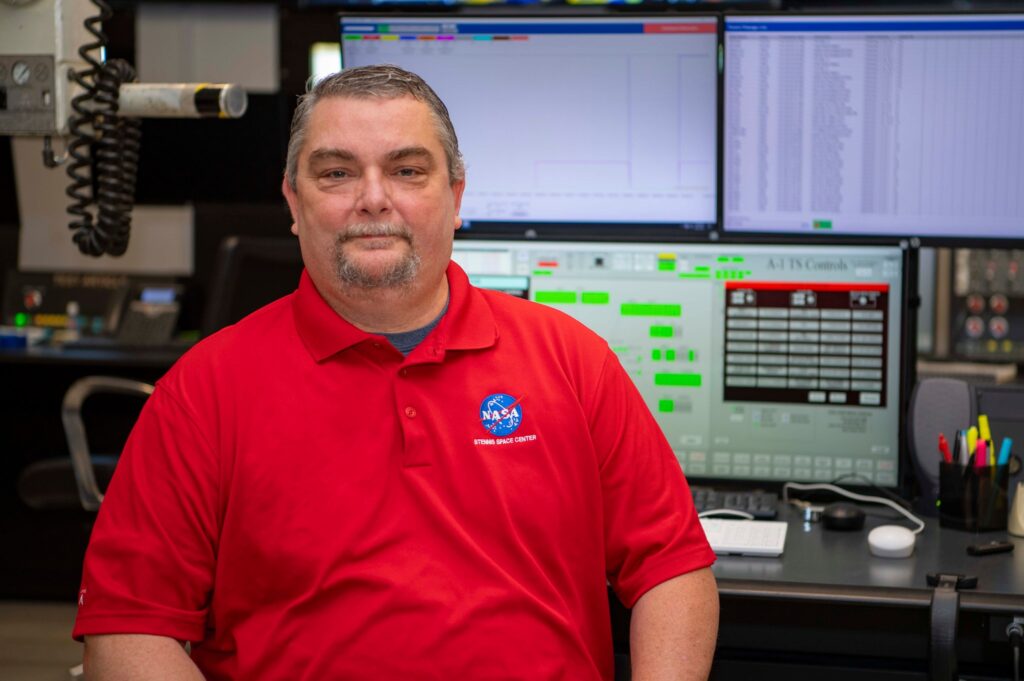Dwayne Lavigne, a controls engineer at NASA’s Stennis Space Center in Bay St. Louis, Mississippi, plays a crucial role in the Artemis mission by programming specialized computers for rocket engine testing. His work is integral to ensuring the success of NASA’s ambitious plans to explore the Moon and eventually send a crewed mission to Mars.
At the heart of his responsibilities, Lavigne programs programmable logic controllers, which are essential for automating precisely timed operations during engine tests. “There are a lot of interesting problems to solve, and they are never the same,” Lavigne explained. “Sometimes, it is like solving a very cool puzzle and can be pretty satisfying.”
The Complex World of Rocket Testing
These specialized computers operate under strict parameters, requiring up to 30 conditions to align perfectly for actions like opening a valve or activating a motor. Lavigne’s expertise ensures that these complex systems function seamlessly, a task that demands both precision and creativity.
Born and raised in Picayune, Mississippi, Lavigne is responsible for establishing new signal paths between test hardware and the computers. Additionally, he develops the human-machine interface that allows test engineers to interact with the hardware through screen graphics.
A Career Built on Innovation and Teamwork
With over a decade at NASA, one of Lavigne’s proudest achievements was contributing to the development of an automated test sequencing routine for RS-25 engine tests at the Fred Haise Test Stand. “We’ve had many successful tests over the years, and each one is a point of pride,” he noted.
Working closely with technicians and engineers, Lavigne appreciates the collaborative effort required to support NASA’s mission. “The group of people I work with are driven to get the job done and get it done right,” he said, highlighting the dedication of his colleagues.
From Data Entry to Space Exploration
Lavigne’s journey at NASA Stennis spans 26 years, beginning as a contractor with the Naval Oceanographic Office and the Naval Research Laboratory. His varied experience has equipped him with a unique perspective on the multifaceted operations at the center.
September marks 55 years since NASA Stennis became a federal city, a hub where over 50 companies, organizations, and agencies collaborate, sharing operational costs to focus more resources on their specific missions. “Stennis has a talented workforce accomplishing many different tasks,” Lavigne remarked.
“The three agencies I’ve worked with at NASA Stennis are all very focused on doing the job correctly and professionally. In all three agencies, people realize that lives could be at risk if mistakes are made or shortcuts are taken.”
The Future of Space Exploration
The work at NASA Stennis is pivotal as the agency looks toward future missions. The Artemis program is not just about reaching the Moon; it’s about laying the groundwork for Mars exploration. Engineers like Lavigne are at the forefront of this new era of space exploration, ensuring that every test and every launch is executed flawlessly.
As NASA continues to push the boundaries of space travel, the contributions of dedicated engineers and their collaborative teams will be crucial. The meticulous work done by Lavigne and his colleagues at NASA Stennis exemplifies the spirit of innovation and teamwork that drives the agency forward.
For those interested in joining this exciting field, NASA Stennis offers numerous career opportunities in engineering, technology, and beyond. As the center celebrates its storied history, it remains committed to fostering a new generation of space explorers.
